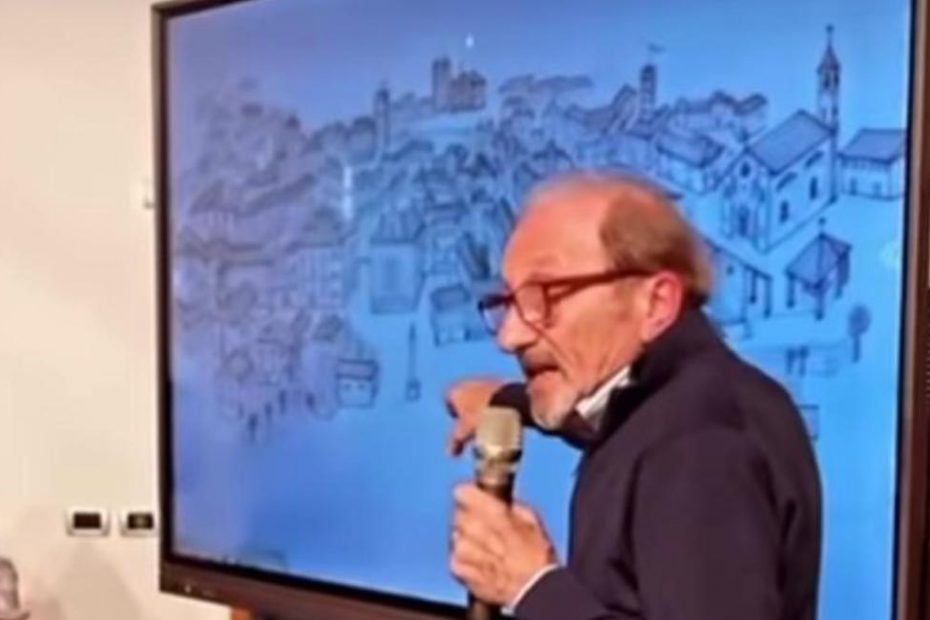In the 19th century the city of Alexandria experienced the urban alteration decided by the First Consul Napoleon Bonaparte, after the decisive victory at the Battle of Marengo (June 14, 1800): the Napoleonic hand produced a damage to our city or was moved by the ambition to enhance the area of Alexandria?
Yesterday, the audience gathered at the Marengo auditorium was seduced by the spectacular discussion on the responsibilities burdened on the General: the duel based on the dissertation undertaken by the architect Gianni Cellè against Efrem Bovo (Marengo temporary manager) was led by the director Massimo Taggiasco (Alessandria24) towards the best synthesis: the armistice and the futuristic proposals.
“The first cathedral of San Pietro was built from 1170 to 1178 – said the architect – and then ennobled to the rank of cathedral by Pope Alexander III. The dissent was expressed by the energetic formula “useless crime” created by the Alexandrian journalist Fausto Bima (1930 – 1973) to allude to demolition although softened by the indemnity of 315 thousand francs. The destruction of other ecclesiastical buildings decided by the Napoleonic administration upset the urban order of the city of Alexandria”.
“The medieval cathedral already restored – it was Bovo’s reaction – creaked for carelessness and, moreover, the slight blame triggered by the destroyed community emblem was relieved by the constraint of building the new cathedral. The new Piazza d’Armi was nodal to move troops from the citadel indicated by the Corsican leader and free northern Italy from Habsburg tyranny. Napoleon’s ambitious project for our territory suggested the tree-lined avenue to join the new central Piazza d’Armi to the stronghold of Alexandria to the “City of Victories” located in Marengo”.
“The Concordat (1801) between the Italian Republic (1802 – 1805) of Napoleon and His Holiness Pius VII – was Piercarlo Fabbio’s intervention – opened the factory to the prefectural administration and regulated the allowances for the suppressed religious orders. General Francesco Federico Campana (Capello) was the Prefect at the Department of Marengo and his cousin Capello was the Departmental Secretary”.
The stone discarded yesterday – was Bovo’s conclusion – is today’s cornerstone. The human testimony perpetuated by the patron Giovanni Antonio Delavo, alias the villa destined for the first Napoleonic museum in Italy, was defined by the Consul General of France in Milan, François Revardeaux, a place appointed to strengthen the Italian-French synergy aided by the Treaty of Enhanced Bilateral Cooperation ratified in Rome (26 November 2021). The work activated at the Marengo International Hub is consistent with the Constitutional Charter of the Italian Republic (1948): Article 9 promotes the development of culture and scientific and technical research. The revalued past can strengthen the economic circle on our central area to the vast area extended from Milan to Santa Margherita Ligure and Imperia”.
